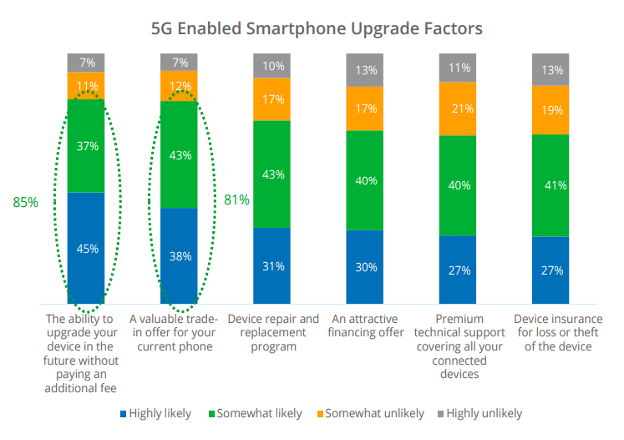Like a lot of people in our industry, I love the first quarter of the year. There’s so much to look forward to between the Consumer Electronics Show (CES) and Mobile World Congress (MWC), and both shows just get more exciting every year. It used to be that the two shows held distinct audiences captive. Like their names suggest, CES was originally geared toward non-mobile electronics, while mobile was given its moment to shine at MWC. Today, those lines have blurred until they’re nearly transparent.
A decade ago, when my Assurant colleagues and I started discussing the convergence of technology across homes, cars, and phones, we envisioned a connected ecosystem like the one we’re living in today. It’s a world where smartphones act as the universal remote to our lives. We use them to control home security systems, automate daily tasks with products like robotic vacuums or coffee makers, and keep our homes energy efficient with time-controlled thermostats and smart lighting. Six in every 10 people use their mobile phones to control their smart home devices, and seven in every 10 shop and pay from their phones.[1]
Considering the importance our phones have in our daily lives, it’s no surprise that mobile carriers and their partners like Assurant are poised to get just as much out of CES as MWC. Mobile-first technologies are taking over, and the connected ecosystem is (forgive the pun) extremely connected. Mobile carriers are maximizing their role in this ecosystem by offering services like home internet or television, and they’re selling more equipment types than they were a decade ago. And consumer electronics brands are increasingly integrating mobile offers into their product sets. As technology continues advancing, the convergence between IoT and virtual worlds will continue to have a huge impact on mobile-first companies.
For those of us innovating in a mobile-first world, what should we look for at CES and MWC?
How to Build on Existing 5G Adoption
When the first 5G-enabled devices were released, 100 million iPhone 12s were sold worldwide in just seven months. At that time, we were in the midst of the pandemic, financial status varied across consumers, and 5G devices were more expensive than 4G devices. Carriers, OEMs and retailers relied on trade-in promotions in order to entice consumers to upgrade and were successful in doing so. In 2021, a record-breaking $3B was returned to U.S. consumers through trade-in programs - a 43% increase over the previous year – proving to be a key factor in the deluge of upgrades.

Now that we are a couple of years out from that initial upgrade frenzy, what will it take to spur even more consumers to make the move to 5G? In 2022, there has been further rollout of 5G networks, including C-Band with even faster speeds, lending itself to improved user experiences with virtual reality, augmented reality, and cloud gaming. However, this isn’t a simple case of if you build it, they will come.
Understanding varying consumer motivations is critical for carriers, cable operators, and OEMs to accelerate their return on investment. With the growth in 5G adoption will come an increase in new device purchases but that will not be the only opportunity for increased sales. There continues to be a rise in consumer dependence on their smartphones. Add to that, consumers are keeping their smartphones for longer, and therefore the likelihood of a repair need increases. The necessity for providing additional solutions of protection products, real-time repair, and expanded fulfillment options will grow in lockstep. As we keep an eye on other ways to improve the user experience around 5G, Assurant has seen major successes from trade-in and upgrade incentives. Read more in our recent eBook, The 5G Race: Will Your Program Medal?

The 5G Race: Will Your Program Medal?
Learn about arising opportunities for your connected company.
Sustainability and Managing e-Waste in the Connected World
Every year, between 50 and 60 million tons of e-waste are generated globally, making e-waste the world’s fastest-growing waste problem.[2] To put those numbers into perspective, that’s the equivalent of throwing away 1,000 laptops every second for an entire year. And the problem is growing. It’s estimated that e-waste will surpass 70 million tons annually by 2030, a 100% increase over a 16-year period.[3] Consumers are throwing away older, clunkier models as our electronics and mobile devices get smaller, sleeker, and more lightweight.
This issue is one of the reasons I’m excited to see sustainability as a key theme at both CES and MWC in 2023. As industry leaders, it’s our job to think through the balance of technology, environmental sustainability, and economics. I’m excited by some of the progress that’s been made. Manufacturers, for example, have adopted a variety of approaches to sustainability, from recycled packaging and phasing out chargers to long-term net-zero commitments.[4]
At Assurant, we believe trade-in and asset value recovery programs are key to a sustainable future. Mobile carriers have been leveraging these programs for years, but few companies apply this model to other types of electronics. But what if more consumers were trading in old gaming systems, wearables, or virtual reality goggles to be redistributed in secondary markets when they upgraded to newer models? The benefits are win-win-win for consumers, businesses, and the environment. Consumers benefit from monetary incentives to support their upgrades, businesses can recoup the value of used devices and resell them into secondary markets, and, most importantly, legacy technology is diverted from landfills.
And the benefit to the environment doesn’t end when a device is kept out of a landfill. Often, devices are resold or set aside to support warranty and device protection claims. When a pre-owned device is repurposed, it means a new device does not need to be manufactured – which avoids producing CO2 emissions and reduces the number of minerals that need to be mined to produce new devices.
Since 2009, Assurant’s collective sustainability efforts have resulted in:
- 116M repurposed mobile devices
- 23,664 metric tons of e-waste redirected from landfills
- 6.4M metric tons of CO2 emissions avoidance
Furthermore, Assurant ensures that any phone that cannot be resold is responsibly recycled. In 2021 Assurant diverted 1.9 million devices to recycling which allows precious metals to be recovered and reused.
We’re excited to work with industry leaders to apply this model to other types of electronics, collaborating to address the industry’s e-waste problem while continuing to advance the connected world.
See you at CES and MWC?
This article is just the tip of the iceberg. What are you most excited to discuss at #CES2023 and #MWC2023?






